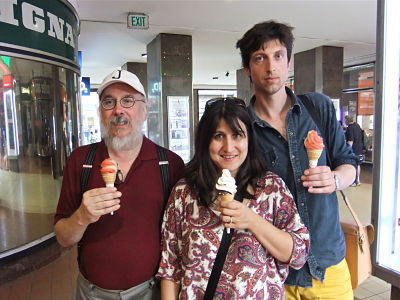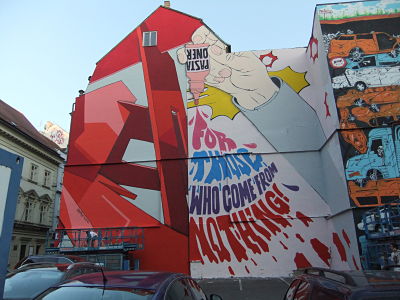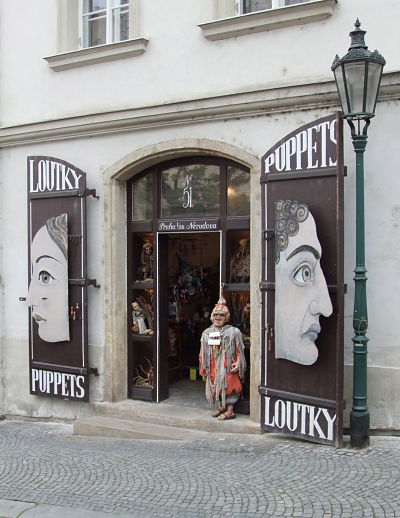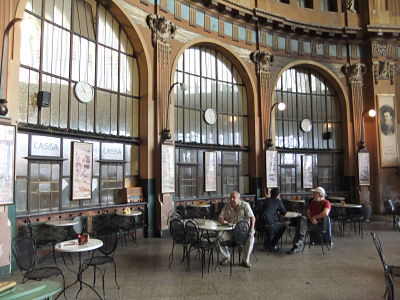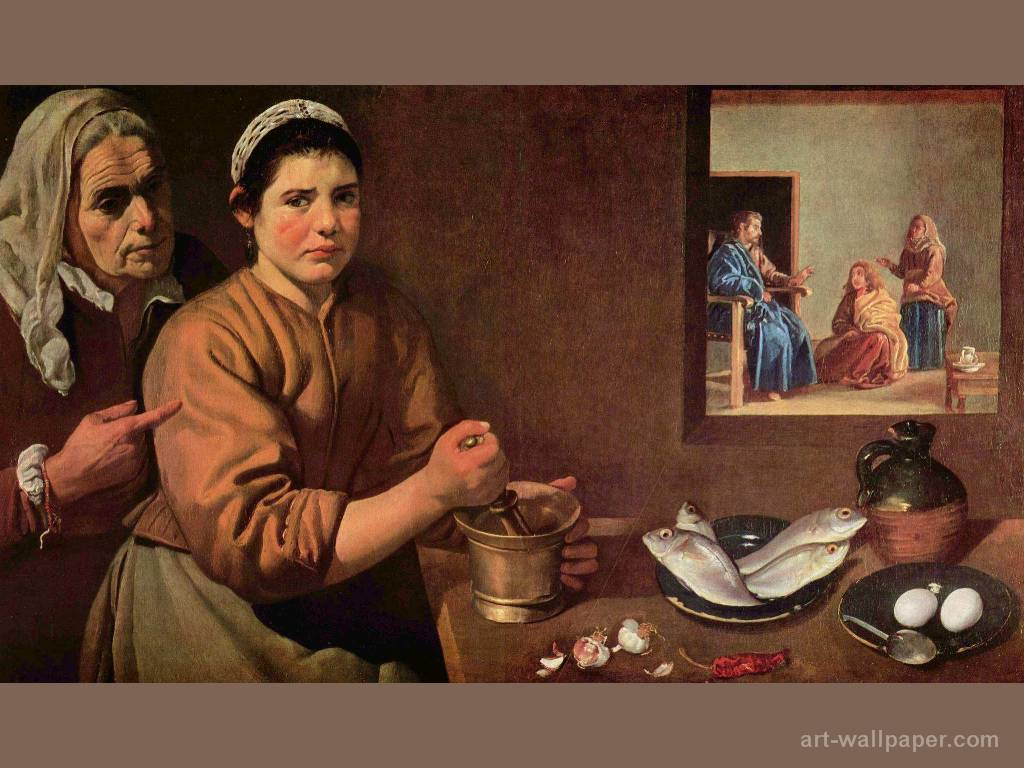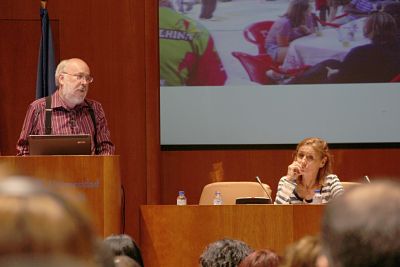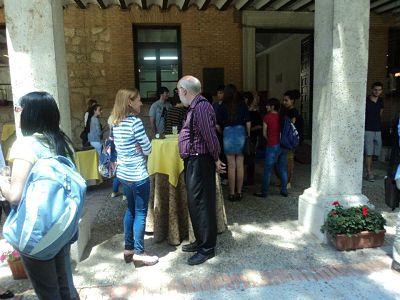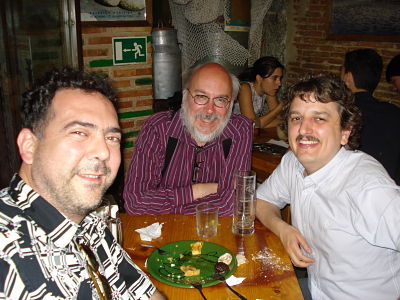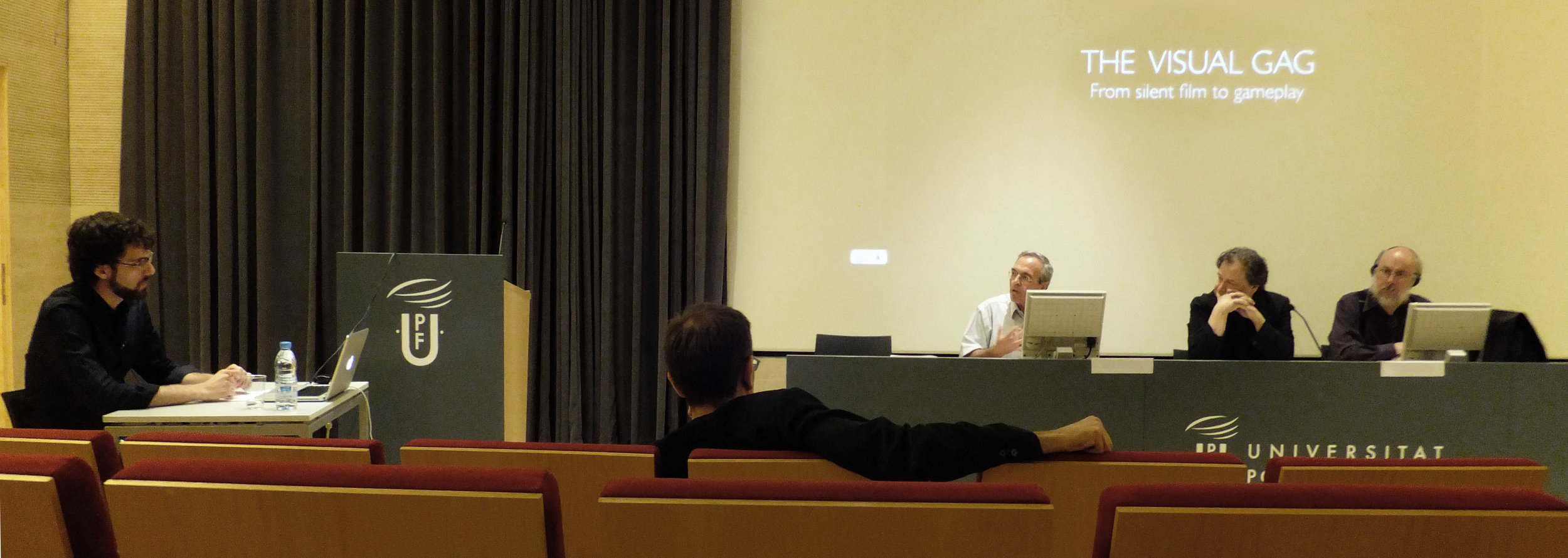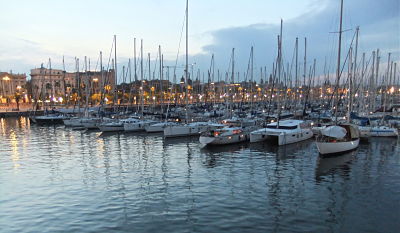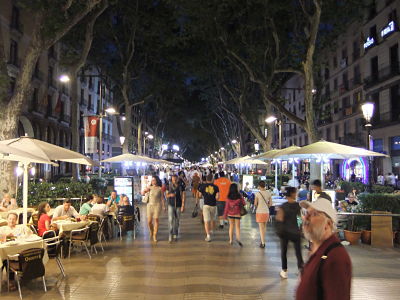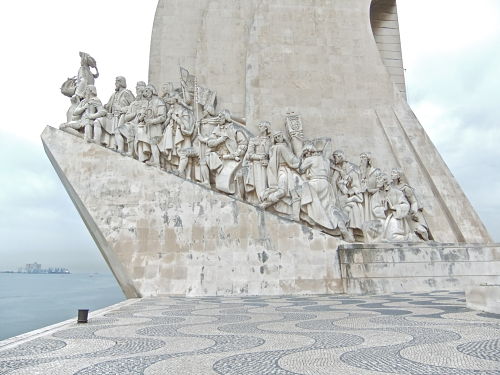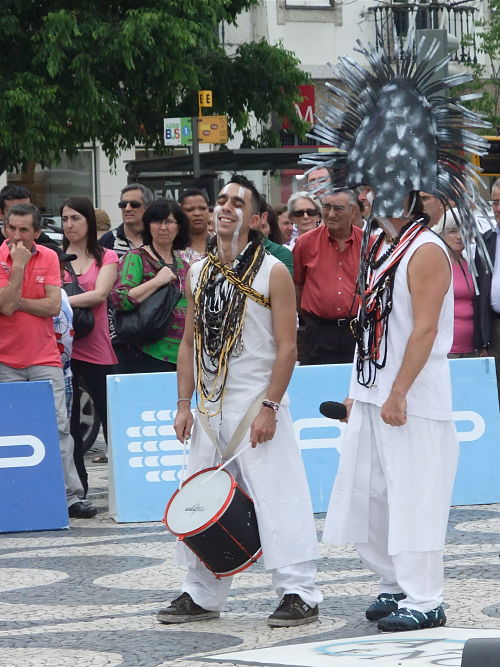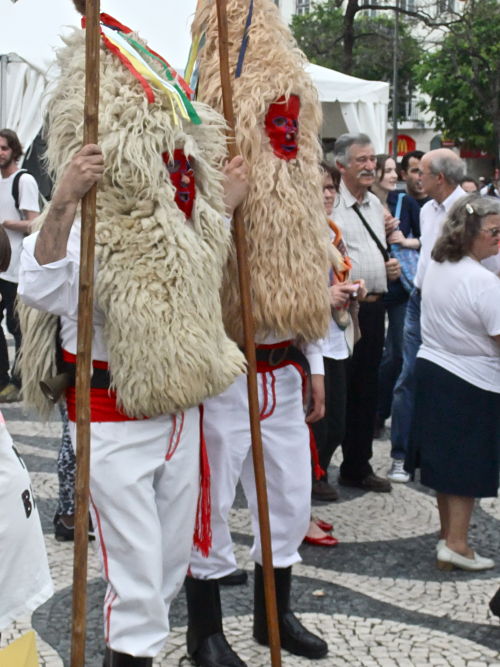Rethinking the Industrial Mindset: An Interview with No Straight Lines' Alan Moore (Part Three)
/You describe mobile communications as both a disruptive and transformative technology. Why? What do you see as the long term impact of the growth of mobile communications in our lives?
I describe mobile as our remote control for life. If we think that the fixed internet has been a disruptive force, mobile devices of which there are more on this planet now than people will have an impact of a higher order of magnitude. From east side LA to the Masai in Africa and onwards to the rain forests of Peru, we are all connected up to and across each other, enabling flows of data / information that can be described in the same way as when Eleanor Roosevelt first saw Iguassu Falls where the Amazon meets Paraguay, Argentina and Brazil and exclaim “poor Niagara”.Mobile is transformative we see this in Africa, a continent that is vast that could never benefit from the fixed internet in the same way the US or Europe has for example. By the constraint of design mobile communications has become the platform by which Africa is dealing with banking, education, healthcare, and trade. MPesa a mobile banking system allows people to pay for goods and services, to have salaries paid, and is used as a payment system for people working via their mobile devices (translations / fact checking) so that they have the potential to increase their income from $2 per day by making $2 for every hour worked. Four years after introducing mobile banking and mobile payment into Kenya, 25% of the total Kenyan economy is transmitted through mobile phones and 70% of the population uses MPesa. There are 74 mobile phones for every 100 Kenyans, well above the African average of 65. And nearly 99% of internet subscriptions in Kenya are on mobile phones. And, Kenya’s biggest bank, Equity Bank is opening an innovation centre in Nairobi focusing on mobile technology.
M-Farm is a service that gives farmers access to market prices for the cost of a text message and allows them to group together to buy and sell products. Something similar is happening in India.
Worldreader.org is providing African children with mobile enabled kindles giving them the first time the opportunity to access information, books, knowledge and learning at a price they can afford.
The crisis management platform Ushahidi could never have worked without mobile technology and its unique characteristics; the ability to harness time critical information using GPS and time stamped location data. Ushahidi is now used in many ways to help gather data - mapping information into a cartography around human crisis issues from natural disasters (Japan and Haiti) to the harassment of women in Egypt by predatory men, to citizen journalism and civic engagement.
In Japan data from vehicles' windscreen wipers and embedded GPS receivers track the movement of weather systems through towns and cities with a precision never before possible. It’s the evolution of what we would call a smart city.
The rainforest tribe the Achuar are using mobile GPS devices to map their land using that data by transferring it onto mining maps augmenting them so that companies buying land from the Peruvian government for mineral extraction can now see for the first time that their activities have a devastating effect on people that wish to live a way of life that has been continuous for many thousands of years.
Museums can become platforms and start to provide services that create additional assets and additional revenue streams. Their audience is global from day one.
These are but a few glimpses of the transformative power of mobile, Africa upgrading itself in part through mobile connectivity to itself and the rest of the world. It can now plug into the world economy.
So mobile is the Iguassu rather than the Niagra – an enabler of all aspects of our lives – an empowering us, providing us with greater autonomy, freedom, efficiency and effectiveness. Even more beautiful with the arrival of smart phone technology that enables us to interface with the world around us with ever decreasing interference in new and exciting ways, contributing to the step change in humanities progress.
You write about the relationship between “data” and “democracy.” I would want to draw a distinction between “data” which can be collected and aggregated without the knowledge of participants (as is increasingly the case in Web 2.0 services) and “discourse” which emerges from the active and conscious deliberation of communities who are working towards a shared goal. Are these two models equally democratic?
Democracy as data the black gold of the 21st Century
I made this observation in 2004, and like all resources of great value, conflict is never far behind.
And I completely agree with your observation and distinction. Data is integral to what comes next, thinking from a perspective of openness and aesthetics of design in that only ugly thoughts bring to bear ugly realities. It may not at first seem a clear connection between data, individual sovereignty and democracy. However once we understand that at high level the commercial world seeks to influence and in some cases coerce political institutions then we have to see them as linked. Or indeed that political ideology seeks to direct the course of political outcomes as is the case in Pennsylvania at the moment and elsewhere where Republicans seeks to make it much harder for various sections of the African-American community to vote in the hope they weaken Obama’s chances of re-election.
In Britain there are attempts by the Government of the day to legislate so that they can access and extract comprehensive, fine-grained covert surveillance of entire populations. All our digital activity: voice, text, Google searches, a level of surveillance that is unprecedented and as John Naughton describes as pernicious.
The recent phone hacking debacle in the UK in which it was found The News of the World hacked into the voice mail of thousands of people including murdered school girl Milly Dowler to sell tabloid newspapers demonstrating a rubicon has been crossed.
Data whichever way you look at it is about power and everyone is at it.
These examples are not democratic, they are harvesting data for personal or state gain. Which is why so many organizations work so hard to fight for the democratic rights of individual sovereignty around the world. It is a battle we must all be part of as 1984 just might be here already.
The opportunity of the open society
Whereas if we see shared data as a life enhancing resource that amplifies cooperative capability built upon mutuality rather than extraction of information for individual gain – then there are reasons to be optimistic.
The Ordnance Survey, the owner of all the topographical data of the UK, has opened up its data-base under a creative commons license to enable other to build upon the work of others, Ushahidi, the crisis management platform, could not work without data. Open source platforms allow diversity to flourish a default setting of nature, and they are extremely resilient and adaptive.
Like all things it is about asking the right question – is what we create for the collective good – where mutualism and trusted networks of relationships can flourish? The increase in the use of Creative Commons and open innovation demonstrates this can work in commercial and non-commercial contexts – there must rules of engagement but these rules are built upon what I describe as the economics of sharing.
We could go one further with the idea of the open commons region. What data could be released into the public domain to aid local communities be better communities to become, as the Shareable Magazine in San Francisco describes as, ‘shareable cities’. Where a multitude of neighbourhood resources can be shared; car rides, urban farming, skills, culture, civic innovation. Like an initiative called Brickstarter, this open approach enables citizens to submit ideas which then get registered on a website. Then based on ideas submitted to the platform, the service then connects visitors, and invites them into project groups. Project groups have their own project page with more information, upcoming events, feedback, etc. Projects can also form connections to existing city resources and community organizations. In July 2011 the City of New York invited volunteer-led community groups to apply for a Change by Us NYC grant to fund ongoing projects.
These initiatives are citizen led, grassroots, networked and flat in hierarchy. As C. Otto Scharmer, author of Theory U describes, “as an evolved geometry that devolves power from hierarchies to evolving trusted networks of relationships”. The aesthetics of such design processes lead to exemplary outcomes.
You introduced me to Richard Sennett’s The Craftsman and Sennett’s arguments play a key role in this book in defining what you see as the ideal form of labor for the future. What do you see as the core insights we might take from Sennett’s book, which deals with much earlier moments in the history of work, to think about how people might relate to their “jobs” in a networked culture?
Insights to Craftsmanship
Richard Sennett in The Craftsman reminds us of a number of things to reflect upon. First the craftsman represents the special human condition of being ‘engaged’.
Secondly, Hephaestus was the Greek god presiding over the craftsman, the bringer of peace and the maker of civilization. ‘More than a technician, the civilizing craftsman has used his tools for a collective good’, he writes. And it was through the spirit of the Enlightenment that the craftsman brought forward a huge surge of social and creative innovation that made the lot of ordinary humans better. So the craftsman questions why he makes things; he must evaluate the energy, effort and time that will consume him in his craft and the final act of creation – is he doing good, is he solving a real problem and offering up something better, is he using all his skills as a civilizing force? These questions must weigh constantly in his mind.
The craftsman is always in beta
His mind must be open to new ideas, techniques, tools and processes; to close his mind to the new, or new ways of doing things, is the greatest risk he will take. The ability to bring two unlikes together in close adjacency and recognise a pattern or a new possibility is the true act of creation; Lennon and McCartney or the fusion of medical knowledge and computing are but two real life examples of what I mean. The craftsman must combine technique and expression so that he is also able to act intuitively.
This can only happen when he possesses deep or what is called implicit knowledge. Rather than acting only upon empirical information, the craftsman’s ultimate act is one of unique expression which can only be delivered through the mastery of these skills.
The engaged craftsman is a committed craftsman, ergo the engaged organization is a committed organization and will work far more effectively.
Does this description describe work for the majority in the early 21st Century? I was asked by a senior leader of a large organization, when I was running a Transformation LAB, whether craftsmanship as a culture could truly be inculcated into a large organization – my answer was yes but it does require a change of culture. The ability to create a dynamic where space is created for a constant process of creating, critiquing, collaborating and communicating.
We are all designed to be risk averse, yet there are ways to mitigate risk, and that is through pattern recognition. Where people see no connection, no pattern, no new pathways, only chaos, the craftsman see patterns, which he can then deconstruct into steps that will lead him successfully to achieving his goal. ‘What do you see?’ and ‘What do I see?’ are questions we need to ask as we seek. For example, if I use Creative Commons legal frameworks in the design and manufacture of cars, what might that mean to accelerate innovation? If I use a highly motivated community open source software connected up to Google APIs and mobile GPS technology, what might that mean? If I use revenue sharing, how will that make my business more attractive yet more disruptive at the same time? Pattern recognition comes from insight – it doesn’t come from an inflexible linear process.
This is also a form of systems thinking – the craftsman thinks about the whole system.
The craftsman also knows how to deliver quality without it necessarily costing the earth.
This then leads on to the idea of whether creativity is a resource or a competence. Organizations from a linear world are designed to function at 100% efficiency, which largely means there is no way in which they can also be creative organizations, as this requires room for reflection, deliberation, conversation, trying stuff out; that’s the practical stuff, but also industrial organisations ideologically fear creativity – anything deemed ‘creative’ is outsourced – but for the craftsman, and the crafted organization, creativity, to be creative, to think and act creatively is something that is a fundamental part of what makes them who they are.
This is the pathway I argue to how we make work more meaningful and life-enhancing which is also a part of our new Human Operating System.
Many are arguing that our current notions of intellectual property emerged and reflected a world where a limited number of people had access to the capacities of cultural production and circulation, and they are reaching a crisis point as we expand the number of participants in the communication systems. How central is copy-right reform to the emergence of the kind of alternative social and culture structures you propose? What would a better model look like?
This is an extremely important question, as law is the hidden framework that underpins and shapes all our lives – in so many ways. The framing by large media conglomerates that all file sharing, and modding of content is ‘piracy on the high seas’, demonstrates an unwillingness by those that believe only they have the right to manufacture culture to adapt to the shape of a more participatory world.
Copy-right reform is central to creating a more diverse and rich cultural and economic landscape. A better model is created out of a commons approach that provides different types of permissions for usage as expressed through the creative commons licenses.
I also think that this parallel universe to law should be taught at law and business schools so our next generation leaders and practitioners of law can learn to assess the granular benefits of an economy built upon sharing and open frameworks as separate to an ideology of strict one-way controls.
Lets face it if copy-right had existed when Dvorak was writing some of his great works based on folk tunes, folk myths and folk culture we would not have that work, nor the great work of many others. They built upon the work of others.
It is of course a difficult area to negotiate; if I had invested $160m in making a movie I might feel very unhappy if I saw no return on that investment based upon piracy. However one could build a model where elements of the movie could be made available for modding, reinterpretation and for sharing and this engaged fan fiction approach could be of great value to creators of expensive content – through marketing, development of innovative ideas and even new content.
And of course we see and extraordinary surge in innovation through the open source movement – the ability to innovate at a much lower cost at greater speed.
So this redistribution of wealth and value, wealth of knowledge, the value of creating better, the ability to build multiple services shows that openness encourages diversity the default setting for life to flourish. As Weber writes in the Success of Open Source the conventional wisdom that innovation is driven by the promise of individual and corporate wealth, ensuring the free distribution of code among computer programmers can empower a more effective process for building intellectual products. But it does challenges the dominant logic of an industrial society.
For myself I published No Straight Lines in an open access epub format which is globally accessible to anyone with a browser and I ask people to tweet to pay, which I think is fair compensation for seven years hard work – but the work also exists in paperback and kindle formats and we ask payment for these. Some people are happy to pay, some people are happy to pay with a tweet, some people are happy to make a donation.
The point is I seek more than short-term monetary value by giving permission for my story to flow and to be part of a global consciousness which would not have been possible otherwise. To emphasize I have used combinations of legal frameworks as an author I am seeking various values and not all are financial. Standing on the shoulders of giants
If we look back to the 60’s it was the Grateful Dead that perfected the idea of sharing as an economic and cultural means to spread their music, hence more people came to the concerts, more people bought the T-shirts and a tribe of Deadheads were born.
So this new model is adaptive, flexible in allowing value to be created in a variety of ways. The economy and aesthetics of sharing creates cultural value, intellectual value and a richer and more diverse pool from which our wider humanity can profit from in a multiplicity of ways. It is a model created from the ethos of mutualism rather than cultural and economic monoculture and strangulation.
You end the book with a series of core principles, one of which is adaptiveness. Why do you see this trait as central to your “nonlinear” culture? What roles can education play in preparing future citizens to be more “adaptive” to a changing environment?
I see this as a core principle because if Humanity is demanding an upgrade from all our industrial institutions which are now proven to be inappropriate for our time – seeking to unleash the full creative potential of every human being and in so doing enhances their wellbeing and that of the wider society – from healthcare to education to the workplace, allowing humanity to surge forward united by a common purpose. We have to ask what do organizations look like in a human-centric world – and how do traditional organizations innovate to upgrade themselves to be able to belong to the extraordinary story of human evolution that now points towards a more participatory, cooperative, and regenerative model of our society?
So learning to be adaptive is central to the story. From an education perspective – we need to prepare our citizens and our organizations to be able to upgrade themselves constantly. Many of the skills I learnt as a typographer whilst at college were obsolete within three years of leaving. And so for me it is an important and key lesson – that we need to teach people to be curious about the world they live in, to want to play in it, and that life long learning – the requirement to be in constant beta (a skill the craftsman possesses) is a necessary condition of thriving in a non-linear world. Adaptiveness is upgrading personal capability, organizational capability, our economies and by default the means by which we do business.
More specifically the ability to individually and collectively: create, critique, collaborate and communicate are the necessary conditions to learning to be adaptive. Your work for the MacArthur Foundation also inspired me to think about adaptiveness as a core principle. You cite the need for play, to appropriate, to simulate – by which you express the need to be able to be a good builder of patterns that can bring new insight – and I would also suggest a new language to describe new and novel ways to create, to ‘scan one's environment and shift focus as needed to salient details’. There is an emphasis on collective intelligence which for me connects to participatory leadership – which ascribes to the view that a best possible future lies in the minds of the many. Teaching our children the power of participatory leadership would bring great value to our general society and therefore great rewards to individuals.
I worry these skills are not being taught, and I worry that there is a growing disconnect between the world we are creating and how education prepares the next cohort to inhabit that world meaningfully. We have to teach our children to be creative actors, and creators in our non-linear world – not to be passive consumers. As Proust observed “the real voyage of discovery is not to seek new landscapes but to look upon the world with fresh eyes”, and in that way we too can learn to adapt well to a changing world.
Alan Moore sits on the “board of inspiration” at the Dutch Think Tank Freedom Lab. He acts as “Head of Vision” for the Grow Venture Community, is a board director of the crisis management NGO Ushahidi and is as a special advisor to a number of innovative companies and organizations including publishing, mobile, the theatre and finance.





